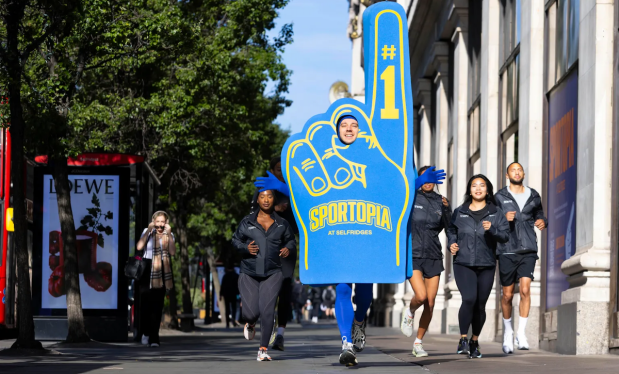
As social media platforms aim to grow their presence in retail, key players including Snapchat, Pinterest and TikTok are turning to omnichannel retail pop-ups.
Most recently, British department store Selfridges announced a partnership with Snapchat, part of its Sportopia summer pop-up, on its augmented reality (AR) locker room for on-site digital try-on of sports uniforms. According to United Kingdom publication Retail Gazette, the AR mirror includes a QR code for consumers to share to Snapchat the looks that the technology shows them.
“We are delighted to see our AR locker room come to life in an iconic shopping destination like Selfridges,” Snapchat EMEA Senior Marketing Director Kate Bird said, according to the outlet. “Sports fans are no longer just the people flooding the stadiums — there’s a much larger digital audience, and new tech like AR is continually changing the way people engage with sport.”
Pinterest, too, has been using in-person pop-ups to drive social commerce. For instance, this past winter holiday season, the company partnered with apparel retailer Anthropologie on a Holiday Showhouse in Brooklyn, New York. The companies designed and styled the home, which was equipped with QR codes for shopping throughout, based on popular trends on the social media platform. Also late last year, the company ran a five-day Pinterest Predicts pop-up for shopping trends in New York City’s Meatpacking district.
TikTok, for its part, has turned to in-person pop-ups both to capture consumers’ retail purchases and their live event ticket spending. In April, cosmetics company Rare Beauty opened a pop-up in partnership with TikTok Shop, which featured a launch party for a new blush as well as free samples and product trials. Also in April, the social media app announced a live music pop-up in London’s King’s Cross featuring emerging artists.
Pop-ups provide an opportunity for brands to create immersive, multi-sensory experiences that digital platforms alone cannot offer. These experiences foster a deeper emotional connection with the brand, which can be crucial for building loyalty and driving sales. Additionally, the pop-ups are designed to be shareable on social media, creating a feedback loop that benefits both the platform and the participating brands.
Furthermore, the temporary nature of pop-ups creates a sense of urgency and exclusivity. Consumers are more likely to attend and share their experiences knowing that the opportunity is fleeting. This sense of exclusivity drives foot traffic and online engagement, making pop-ups a powerful tool for social commerce.
Overall, social media apps are becoming more and more involved in retail, with younger generations disproportionately engaging with social commerce. The 2023 PYMNTS Intelligence report “Tracking the Digital Payments Takeover: Monetizing Social Media” found that 43% of consumers browse social media to find goods and services, and 14% ultimately purchase those goods and services via social media. Those shares rise to 68% and 22%, respectively, for Gen Z and to 64% and 22% for millennials.
Plus, the recent PYMNTS Intelligence special report “Generation Zillennial: How They Shop” found that 28% of Gen Z consumers had made a retail purchase in the previous 30 days at least partially due to a social media influencer or celebrity, and 39% had done so at least in part because of an ad on social media.
For all PYMNTS retail coverage, subscribe to the daily Retail Newsletter.